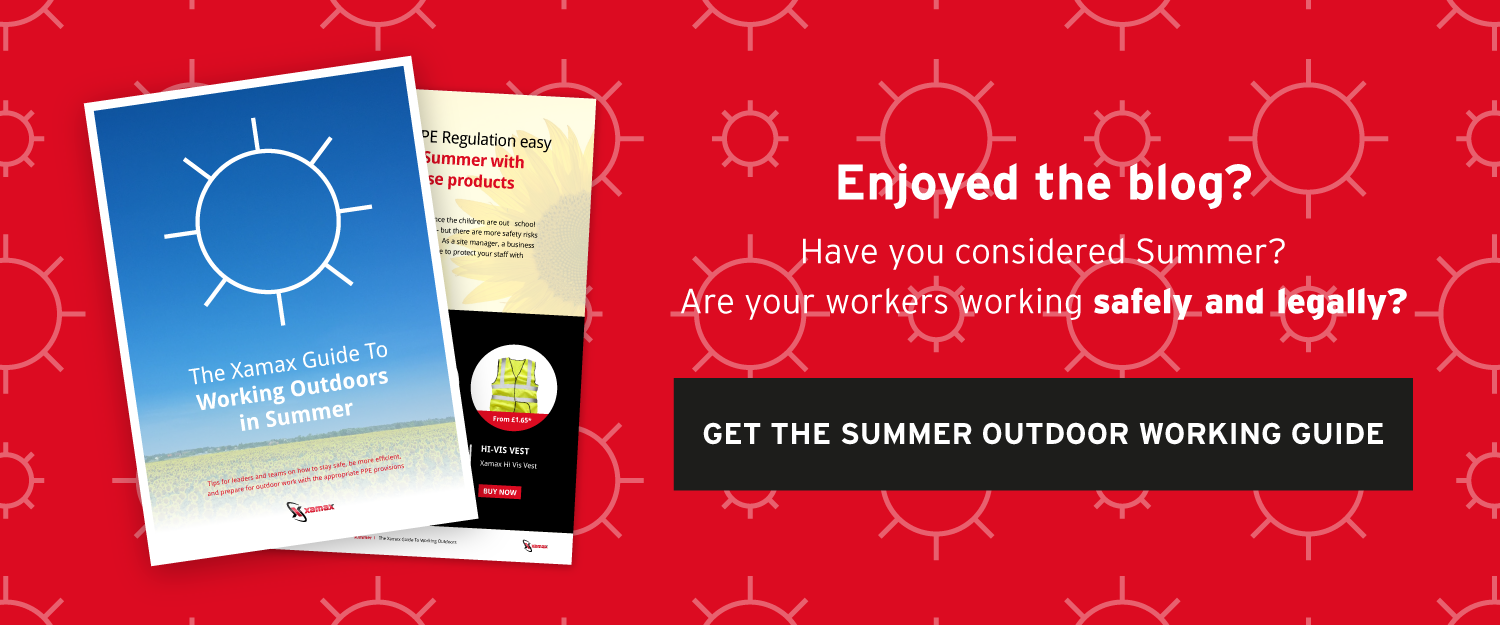Does LED Lamp Technology Help with PPE?
LED lamps have many uses thanks to their efficiency and longevity. Already used in signs, homes and at events, this technology might be able to help when it comes to PPE (Personal Protective Equipment). Prototypes are in development that could see LED lamp technology improve PPE, helping to eliminate some workplace hazards.

What is LED Lamp Technology?
LEDs are a fantastic alternative to traditional fluorescent, halogen and incandescent bulbs as they pass current through a semiconductor, rather than a filament. This means there’s no filament to replace after time so the bulb lasts longer. They’re already popular in signs, car interiors and kitchens thanks to their longevity, brightness and efficiency.
The lack of filament means the bulb doesn’t get as hot, allowing it to be used within clothing. For example, it’s been introduced into the cycling industry with jackets now available that have in-built cycle indicators so motorists behind know exactly which way the cyclist is turning.
Who Could Benefit From LED PPE?
Working at night presents obvious hazards to staff, whether they’re working outside on the roads or doing overnight work inside buildings. Poor lighting can cause staff to fall over obstacles or be difficult to see for passing motorists.
LED lamp technology that’s utilised within PPE clothing is an extra safety feature that can help to keep staff safe. Construction workers that carry out maintenance and new builds during the night on motorways have to work in difficult conditions in close proximity to speeding cars. LED lamps within their clothes will allow them to be easily spotted by all motorists who can avoid them easily.
Airport workers also have to work at night in dangerous conditions, dealing with not only the planes themselves but all of the other vehicles on the tarmac. If airport vehicles don’t see someone due to poor lighting, serious accidents could occur. Having built-in lights within coats or headwear will make them easy to see, even in the dark.
It isn’t just staff that work outside that could benefit from LED PPE. Many different industries have workers that need to operate in small spaces. Plumbers, electricians, lift operators and sewer workers often have to deal with poor lighting and tight spaces.
LED lamps can illuminate the area without a person having to hold a torch, freeing up a hand and making their job easier.
How Close is This Technology?
LED clothing isn’t a new concept and is starting to be seen on catwalks around the world. They make a serious fashion statement and grab the attention of everyone else in the room. It hasn’t taken long for workwear specialists to appreciate the practical applications of LED lamps.
There are some prototypes currently in development that would introduce LED lights to PPE. One such item is a robust safety jacket that would include a removable, rechargeable LED light.
The light could be charged quickly in any USB port and would provide enough light to illuminate the wearer from all sides. The battery lasts for six hours on the lower setting and two and a half hours on the brightest setting.
Prototypes like these will soon become commonplace, providing safe working conditions for staff in a variety of industries.
How Else Can Staff Stay Safe?
Until LED PPE becomes a widespread reality, there are a number safety features you can implement to make sure your staff are safe when working in the dark. Although you might not have them built-in to your clothing, it’s important to make sure the area is well lit.
Ensuring the area is lit correctly prevents basic trips and falls as well as more serious hazards like vehicle accidents. Reflective clothing like Hi Vis jackets can make it easy to know where staff are at all times.
Working through the night presents mental challenges that need to be dealt with. Staff are more likely to feel fatigued, make mistakes or fall asleep which could all lead to more serious incidents.
It’s your responsibility to ensure that workers take regular breaks. You should also offer support and training to stress the dangers that staff face when travelling to and from work in the dark.
You can offer information that can help them to prepare for night shifts, like keeping a regular sleep pattern, having your largest meal of the day before the shift starts and avoiding fatty foods.
Download Our Summer Working Guide
Working during the day can be just as dangerous as working at night, especially when it’s hot. Long periods of exposure to the sun can cause dehydration, exhaustion, heat stress and even skin conditions.
Learn how to keep your staff cool in the sun by downloading our free guide. It’s packed with important information that can help you to ensure staff are protected this summer.

- How Long Does PPE Last? (Probably Not As Long As You Think) - 12th March 2025
- BSIF Issues Urgent Warning: 90% of PPE from Non-Registered Providers Fails Safety Tests (2025) - 10th February 2025
- Understanding UK Safety Standards for Respiratory Protection - 14th October 2024






